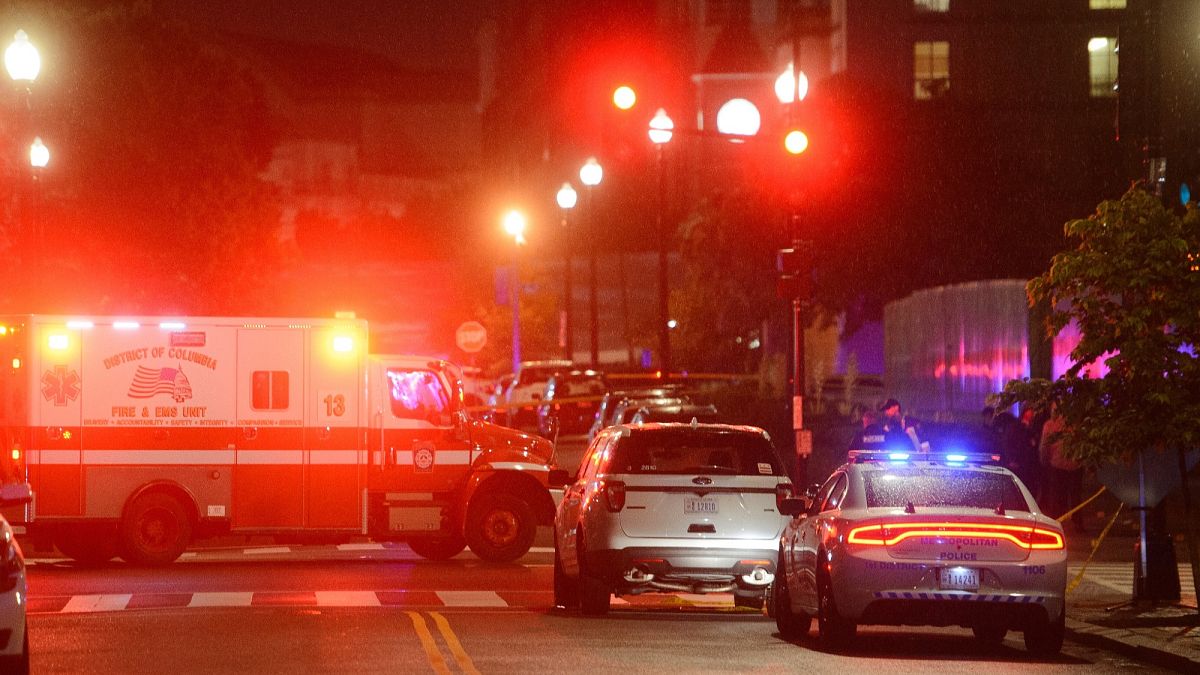Astronomers saw one galaxy impale another. The damage was an eye-opener.


Two extremely distant galaxies appear to be ramming into each other over and over again at speeds of over 1 million mph.
The pair — dueling it out 11 billion light-years away in space — has given astronomers their first detailed look at a galaxy merger in which one impales another with intense radiation. The armed galaxy's lance is a quasar, a portmanteau for "quasi-stellar object."
"We hence call this system the 'cosmic joust,'" said Pasquier Noterdaeme, one of the researchers from the Institut d'Astrophysique de Paris, in a statement.
A quasar is a blindingly bright galaxy core — brighter than all of the galaxy's starlight combined, according to NASA. Through telescopes, these sometimes look like a single star in the sky, but they're actually beams of light from a feasting black hole at a galaxy's core. Scientists have suspected quasars may "turn on the lights" when two galaxies crash into each other. But finding direct proof has been challenging.
Not only did the new observations show how a cosmic collision helps a quasar light up, it also revealed that the quasar can be a weapon of mass destruction, snuffing out another galaxy's ability to form new stars. These findings, published in the journal Nature, may help scientists better understand how supermassive black holes can shape the fates of other entire galaxies.

When astronomer Maarten Schmidt found the first quasar in 1963, it looked like a star, though it was much too far away for that to have been the source. Scientists have since learned that quasars are relics of a much earlier time in the universe.
The nearest quasars to Earth are still several hundred million light-years away, meaning they are observed now as they were hundreds of millions of years ago. That quasars aren't found closer to home is a clue they existed when the universe was much younger. But scientists seek them out for studies because they may provide insight into the evolution of the universe.
Though the research team saw the collision as if it was happening now, it occurred long ago, when the universe was only 18 percent of its current age. That's possible because extremely distant light and other forms of radiation take time to reach our telescopes, meaning astronomers see their targets as they were in the past.
"We hence call this system the 'cosmic joust.'"
To conduct the study, an international team of astronomers used the Atacama Large Millimeter/submillimeter Array, or ALMA, and the European Southern Observatory’s Very Large Telescope, both peering up at the sky from the Chilean desert.
Their research supports a long-held theory: that galaxy mergers can trigger quasars, and that the energy from them can alter their surroundings in powerful ways.
"Here we see for the first time the effect of a quasar’s radiation directly on the internal structure of the gas in an otherwise regular galaxy," said co-author Sergei Balashev, a researcher at the Ioffe Institute in Russia, in a statement.
The gas that would usually feed star-making activity within the wounded galaxy was transformed: Rather than being dispersed evenly in large loose clouds, the quasar's radiation clumped the gas in super tiny, dense pockets, rendering it useless for star births. This suggests the quasar's energy effectively sterilized the galaxy — at least wherever the radiation hit.
Black holes in general are some of the most inscrutable things in the cosmos. Astronomers believe these invisible giants skulk at the center of virtually all galaxies. Falling into one is an automatic death sentence. Any cosmic stuff that wanders too close reaches a point of no return.

But scientists have observed something weird at the edge of black holes' accretion disks, the rings of rapidly spinning material around the holes: A tiny amount of the material can suddenly get rerouted. When this happens, high-energy particles get flung outward as a pair of jets, blasting in opposite directions, though astronomers haven't quite figured out how it all works. It's also still a mystery as to when exactly in cosmic history the universe started making them.
The quasar didn't just affect the other galaxy. The sparring apparently allowed new reserves of fuel to flow into the galaxy hosting the quasar, bringing fresh gas within reach of the supermassive black hole powering it. As the black hole eats the material, it perpetuates the violence.
"These mergers are thought to bring huge amounts of gas to supermassive black holes residing in galaxy centers," Balashev said.
What's Your Reaction?
 Like
0
Like
0
 Dislike
0
Dislike
0
 Love
0
Love
0
 Funny
0
Funny
0
 Angry
0
Angry
0
 Sad
0
Sad
0
 Wow
0
Wow
0

















































.png?Expires=1838763821&Key-Pair-Id=K2ZIVPTIP2VGHC&Signature=IO0~CT3pU-TcxGc~yoZSmoQx23MZVuK-~4jSii~NKEblRmyO3el7NXPu~Rh1o23voASg7hlcHLw4kvQuDK1jssEhcjoNBBvEpZ~GGOAU6yosBhpHpeF179F~h7i6VxmsBNh9gtTutkoqY73O2YCFey~IAqSzKbBqETP1kP9cAg1916Z1YkJJs-5MliMrkZ5d7-mWGLbpHp2wGj2VlMph8XzYlL4~y1O7fB~JdIS~Rs4RMRs2x0WT1qUIpHAsf3GdwtOyAmKFSpIg8xCyNGZZ5h~13nXlmpd7uPvW8tBfttpG9pFTqcway-uch5WyfHOEfi7UlJCOWrr6fCYY5PMgSg__)







